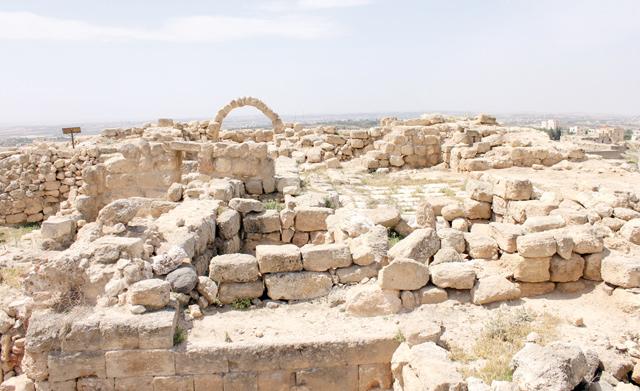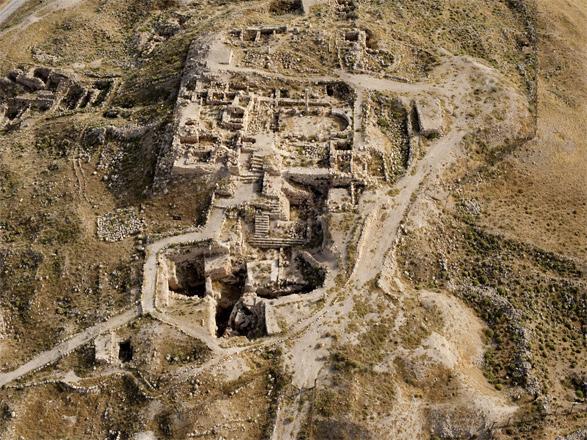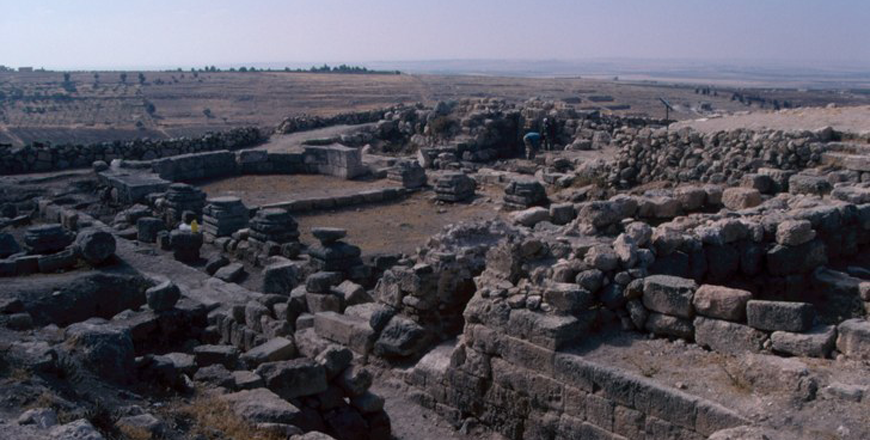You are here
Tell Hisban ‘a living laboratory’ of Mamluk periphery — US scholar
By Saeb Rawashdeh - Feb 03,2021 - Last updated at Feb 03,2021

Residential quarters with Roman arches are seen in Tell Hisban, located in the Madaba Plain (Photo courtesy of Bethany Walker)
AMMAN — There has been a boom in studies devoted to the Mamluk period (1250-1517) due to a recent “rural turn” in Islamic archaeology, according to a US archaeologist.
Speaking during a webinar titled “The Rural Renaissance of Mamluk Jordan: Tell Hisban in Context” on Thursday, Professor Bethany Walker from the University of Bonn, Germany, said: “The rural turn in Islamic archaeology pushed scholars away from castle sites”.
Another reason for the shift is the collaboration between archaeologists and historians, Walker said during the event organised by the French institute Ifpo.
There are four points for studying Tell Hisban, located in the Madaba Plain, which according to Walker are: The relations between the Mamluk state and Jordanian small communities, the revival of agriculture in that period, rural decline and daily life.
Tell Hisban is “a living laboratory” of the Mamluk periphery, she stressed, referring to the presence of a castle and a village from the same period.
“The citadel enables scholars to study how the Mamluk administration exercised power towards the local communities on the periphery of its empire,” Walker continued, noting that Tell Hisban had many storerooms for agricultural produce.
The remains of the pottery found at the citadel testify to the diet of soldiers and administrators of the garrison, Walker said, highlighting the coexistence and the trade with the nearby villages and the countryside.
“We have a way too many coins in Tell Hisban and Diban,” mainly copper coins used for everyday village market frequented by farmers and traders from Jerusalem, she said.
After 1517, many of these sites were gradually depopulated, the archaeologist said, adding that a team also found a jar with goat milk in a house dating back to the 14th century.
“Another message that we learned from Tell Hisban’s decline is the transformation of houses into agricultural terraces during the Ottoman time,” Walker said, adding that “the turn of a site from an occupational phase to a cultivation phase marks the beginning of the decline”.
Related Articles
AMMAN — The Mamluk period (1250-1517) is still a relatively unexplored field for scholars who know very little about the residence patterns
AMMAN — Tell Hisban, located in the Madaba Plains, represents the “granary of the empires”, noted an American archaeologist.The site, coveri
AMMAN — The Ottoman conquest of the Levant in 1517 had an impact on the economic models of the Mamluk dynasty that ruled the area from














